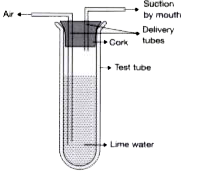It is often observed that a sinking ship turns over as it becomes immersed in the water. Explain the reason behind this observation.
To explain why a sinking ship turns over as it becomes immersed in water, we can break down the explanation into several steps:
1. Understanding Key Concepts:
- Center of Gravity (CG): This is the point where the weight of the ship acts downwards.
- Center of Buoyancy (CB): This is the center of the volume of displaced water, where the buoyant force acts upwards.
- Metacenter (M): This is a point above the center of buoyancy where the ship's stability is determined. It is the point about which the ship tilts.
2. Initial Conditions:
- When the ship is floating normally, the center of gravity (CG) is below the metacenter (M). This configuration provides stability to the ship.
3. Sinking Process:
- As the ship starts to sink, the center of buoyancy (CB) shifts upward because it is determined by the submerged volume of the ship.
- Simultaneously, the center of gravity (CG) may rise due to the distribution of weight within the ship.
4. Change in Stability:
- When the ship becomes partially submerged, the metacenter (M) moves down relative to the center of gravity (CG).
- As the ship sinks further, the distance between the center of gravity (CG) and the metacenter (M) decreases, leading to a situation where CG is above M.
5. Creation of a Couple:
- When CG is above M, the ship becomes unstable. A couple (a pair of equal and opposite forces acting at a distance) is created due to the difference in positions of CG and CB.
- This couple tends to rotate the ship, causing it to turn over.
6. Final Outcome:
- As the ship continues to sink, the forces acting on it cause it to rotate and ultimately turn over, leading to capsizing.
Conclusion:
The turning over of a sinking ship is a result of the shifting positions of the center of gravity and the metacenter, which creates an unstable condition that leads to the ship capsizing.
- Center of Gravity (CG): This is the point where the weight of the ship acts downwards.
- Center of Buoyancy (CB): This is the center of the volume of displaced water, where the buoyant force acts upwards.
- Metacenter (M): This is a point above the center of buoyancy where the ship's stability is determined. It is the point about which the ship tilts.
- When the ship is floating normally, the center of gravity (CG) is below the metacenter (M). This configuration provides stability to the ship.
- As the ship starts to sink, the center of buoyancy (CB) shifts upward because it is determined by the submerged volume of the ship.
- Simultaneously, the center of gravity (CG) may rise due to the distribution of weight within the ship.
- When the ship becomes partially submerged, the metacenter (M) moves down relative to the center of gravity (CG).
- As the ship sinks further, the distance between the center of gravity (CG) and the metacenter (M) decreases, leading to a situation where CG is above M.
- When CG is above M, the ship becomes unstable. A couple (a pair of equal and opposite forces acting at a distance) is created due to the difference in positions of CG and CB.
- This couple tends to rotate the ship, causing it to turn over.
- As the ship continues to sink, the forces acting on it cause it to rotate and ultimately turn over, leading to capsizing.
The turning over of a sinking ship is a result of the shifting positions of the center of gravity and the metacenter, which creates an unstable condition that leads to the ship capsizing.
Topper's Solved these Questions
- MECHANICAL PROPERTIES OF FLUIDSBook:MODERN PUBLICATIONChapter:MECHANICAL PROPERTIES OF FLUIDSExercise:Problems
Explore 9 Videos
- MECHANICAL PROPERTIES OF FLUIDSBook:MODERN PUBLICATIONChapter:MECHANICAL PROPERTIES OF FLUIDSExercise:NCERT (Textbook Exercises)
Explore 20 Videos
- MECHANICAL PROPERTIES OF FLUIDSBook:MODERN PUBLICATIONChapter:MECHANICAL PROPERTIES OF FLUIDSExercise:Practice Problems
Explore 52 Videos
- MATHEMATICAL TOOLSBook:MODERN PUBLICATIONChapter:MATHEMATICAL TOOLSExercise:PRACTICE PROBLEMS (10)
Explore 12 Videos
- MOTION IN A PLANE Book:MODERN PUBLICATIONChapter:MOTION IN A PLANE Exercise:Chapter Practice Test
Explore 15 Videos
Similar Questions
Knowledge Check
Water pollination is observed in
AGrassesBWater hyacinthCWater lilyDHydrilla
Explain the following observations

View SolutionEffervescence is observed when the water is warmed. What is the reason behind it ?
View SolutionOn increasing the temperature of a copper conductor, its resistivity increases. State the reason behind this observation.
View SolutionIt is observed in case of stringed instruments sometimes that a thick wire is wrapped by a thin wire. Give reason behind this practice.
View Solution
What is the observation? Give reasons.
View SolutionWhen a piece of metal is dropped in cold water, the water slowly becomes turbid and effervescence is observed. What will you observe, if blue litmus paper is dipped into the turbid water ? Indentify the metal and justify the observation.
View SolutionThe atomic radii of first group elements are given below:

State the reason behind the observed trend in the above elements.
View Solution

